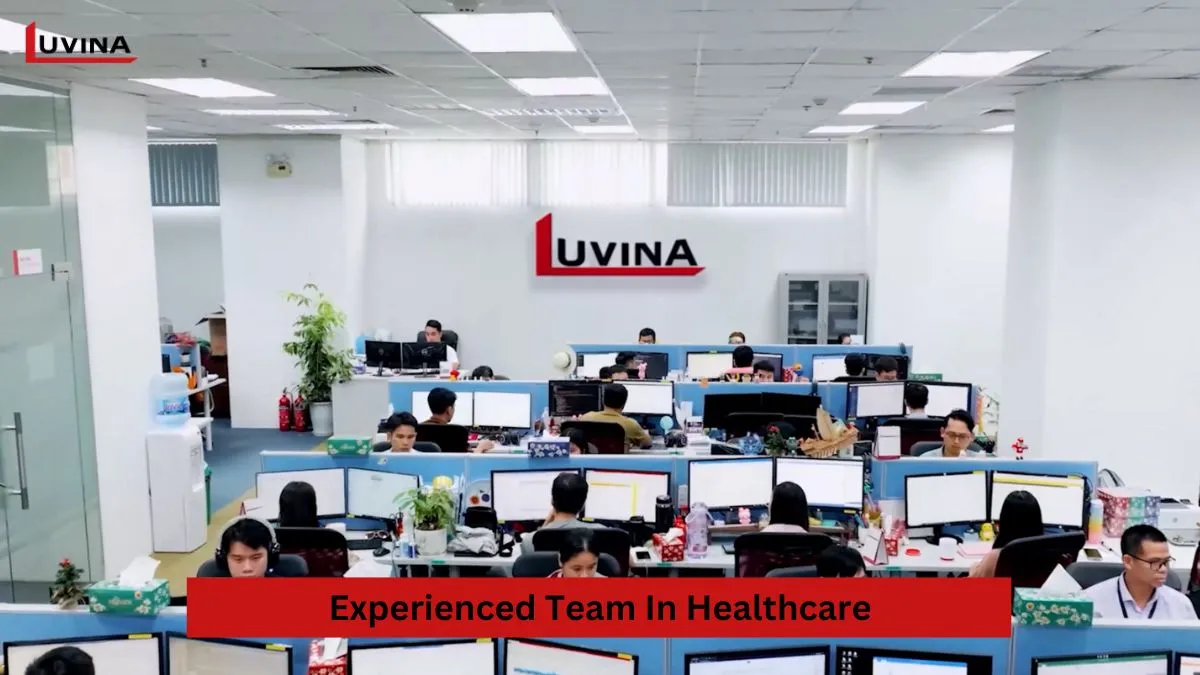Clinic management software development is becoming a key trend as the healthcare sector leads in the adoption of technology. As reported, 75% of healthcare providers implementing the clinic management software noted considerable operations and patient satisfaction improvements.
This fact indicates that clinics need to start finding out and planning for the adoption of advanced management software to remain competitive. The article below will provide a detailed guide on how to create clinic management software and share with you the essential information so that you can get a clear overview of the transition process from traditional to digital ways, which is considered quite complex.
What is a Clinic Management System?
Clinic management software, or as others may refer to it, hospital management software, is a custom-built solution that simplifies clinic and hospital operations. The clinical management system or application will store and process securely all the necessary information that runs the healthcare facilities. It provides safety access from any device at any location.

Clinic management software development could support doctors, nurses, and hospital management in reducing financial burdens, increasing communication, and working more in harmony to smoothen the operational workload. Whereas smaller clinics still operate with traditional methods like using paper records, shifting to a clinic management system through software is more efficient, secure, and professional.
According to their scope and functionality, clinic management systems can be further grouped into types such as Field-specific software, Task-specific software, Administrative software, operational software, and billing software. Each of these can stand alone, be integrated to form part of a holistic hospital management solution or be combined, depending on the requirements and size of the healthcare facility.
Benefits of Clinic Management Application
Clinic management software development enhances the operation of health facilities in various ways, ensuring great benefits for both patients and healthcare providers.
Particularly, with a clinic patient management system, there are secured provisions for patients’ health records online, appointment booking, and reminders. The immediate effect of this includes shorter waiting times, along with a generally better healthcare experience. With the support of the clinic management system, patients will be able to communicate with providers more effectively for better outcomes in treatment and improved care.
On the other hand, clinic management software development helps doctors and nurses to structure their work- administrative work in particular – efficiently, productively, and with more time available for patients. Also, the management software provides the healthcare professional with a superior reporting and analytics view for a better understanding of the workings of the business, and its compliances related to healthcare, and to keep important data out of reach of unauthorized access.
Clinic Management Software Development Process
Clinic management software development brings a plethora of benefits to your healthcare facility. How to create a qualitative clinic management application? Here is a general process you can refer to:

Step 1: Gather requirements and plan
In this step, you need to identify the needs of your clinic or healthcare facility. In other words, ask yourself: why do you need clinic management software? To pinpoint these needs and create a comprehensive plan, organize meetings with various departments to understand their daily operations, the challenges they face, and the gaps that need addressing. This process helps you identify which areas need improvement and integrate the corresponding solutions into the software you are developing.
Also, assess already available clinic management systems on the market, find the drawbacks, and use such insights to improve the quality of your software.
Step 2: Define essential features of the software
Features to be integrated into your clinic management information system depend on your needs. A clinic management software should, at a minimum, have the following key features:
- Appointment scheduling and online booking
- Patient portals and communication
- Electronic health records
- Administrative/financial management
- Ordering and lab management
- Insurance and payment processing
- Reporting and analytics
- Staff scheduling and inventory
It is good to initiate a clinic management software development project with an MVP to test your features and ideas. An MVP is the basic form of clinic management software that only contains the most important features. Deploying an MVP will allow you to gather user feedback and improve future versions in the most cost- and time-efficient way possible.
Step 3: Choose the suitable development approach
If you are considering developing a clinic management system website, you first need to decide between the development of custom software and using already invented SaaS. There, you will have to strike a balance between various factors depending upon the needs of your health facility, budget, and priorities.

Based on our experience, developing custom software normally offers more long-term advantages, even though the cost may be higher in comparison. Custom software is also highly flexible and can easily scale up or down depending on the health service. Also, by developing custom software, you can choose features that actually do the job for your use, hence avoiding extra features that you don’t need to pay for.
If you choose a custom software development, you would also have to choose a way of developing it, which could be Agile or Waterfall. Each methodology represents one more approach to project management and execution.
Step 4: Design the UI/UX
The aim of UI/UX design in clinic management system software is to create an interface aligned with the needs of its users. It is very essential to understand the workflows and interactions of users and their needs before doing the design. We would recommend going into detailed persona creation for each user type, from doctors and administration to patients, to wholly understand their needs, challenges, and contexts in which they will use the software.
Ensure your management system software is easy, user-friendly, and intuitive at your clinic. Design the interface of visual appeal, but it is crucial to make it useful and accessible for users lacking vast experience with computers: interacting with the software as much as possible should become smooth and easy.
Step 5: Development and testing
From the information elicited in Step 1, you will select a suitable technology stack for clinic management software development. Your development for the clinic management software shall be based on the adopted development methodology and the particulars of the project.
The breakdown into small phases is recommended for the development phase of this project. After the software is developed, it must be put through vigorous testing regarding quality and performance before it goes live.

Step 6: Deployment and maintenance
This is the final step in the clinic management software development process. Along with deployment, we also recommend implementing it in phases, starting with a small group of users before a wider rollout to minimize risks and make necessary adjustments. After deploying to the smaller group, you need to continuously monitor the system’s performance to detect any issues early.
Following deployment to critical mass in the facility, ongoing maintenance will include the deployment of software releases with proper version control and planning for recovery if the deployment has problems. The actual process of deployment should use automated tools wherever possible, with a minimum of manual entries to minimize errors.
Cost of Clinic Management Software Development
Like in the development of many other software applications, clinic management software development cost depends on several factors such as:
- Software features and complexity: The greater the number of features the software has, the more complex it will be; this certainly prolongs both development time and costs. For example, basic software with 10 to 15 features takes approximately 200 to 500 hours to develop, while the more complex one with 30 to 35 features may take up to 1,800 to 3,600 hours to develop.
- Development team: This involves investments in hiring and managing the experts, together with all other associated costs, and is more expensive as compared to outsourcing.
- Technology stack: The cost of development for a clinic management system is influenced by the research costs, licensing fees, maintenance, and integration that are linked to the technology stack.
- UI/UX design: More complex UI/UX with heavy customizations means increased cost in development.
Based on these influencing factors in clinic management software development, we can provide a rough average estimate as follows:
- – To develop a basic clinic management system software, you would need a budget ranging from $11,000 to $25,500.
- – Developing a medium clinic patient management system costs from $40,000 to $80,000.
- – Developing advanced software can cost anywhere from $90,000 to $180,000.
Luvina’s expertise in Building Clinic Management System
Having developed software solutions for businesses spanning two decades, including the healthcare sector, Luvina is committed to transforming complicated requirements of healthcare facilities into simple and effective software solutions aimed at enhancing their operations.

By applying advanced technologies, we will bring innovative solutions to improve patient care, facilitate workflows in healthcare facilities, and enable communication between professionals and patients. We use the latest technology in AI (artificial intelligence) and data analytics for real-time insights, offering personalized treatment experiences and improving efficiency in treatments.
The team at Luvina has extensive experience in providing solutions for healthcare facilities. Therefore, we not only understand the regulations but also the technological environment. That’s why we are capable of building the best software to help healthcare facilities not only become stronger in terms of technology but also ensure compliance with all regulations related to healthcare such as GDPR and HIPAA.
With deep expertise in information technology, Luvina will be a powerful partner alongside you in the journey of clinic management software development.
Conclusion
Developing clinic management system software for your needs will significantly enhance operational efficiency at healthcare facilities. The software should be built to satisfy the needs of both patients and improve staff productivity to further the cause of better collaboration with valued partners like Luvina – the shortest path to achieving this goal. If you want to explore clinic management software development, contact Luvina today for a consultation..









Read More From Us?
Sign up for our newsletter
Read More From Us?
Sign up for our newsletter